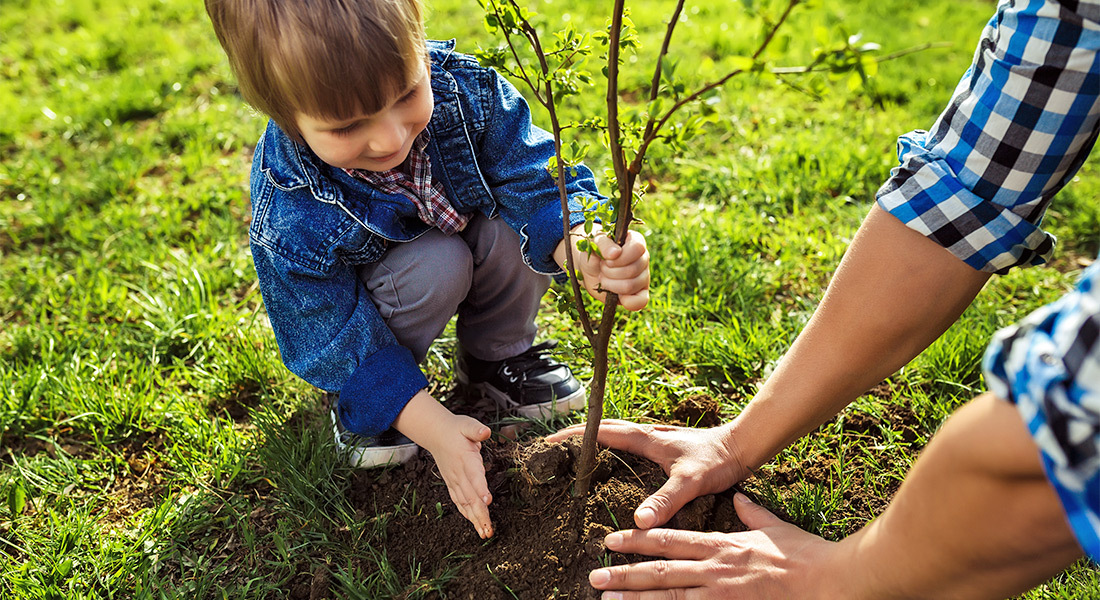How can I plant a tree like a pro?

Trees add beauty, habitat and countless other benefits to any yard. Yet contrary to popular belief, the best time of year to plant them isn’t the spring, but rather the fall. The reason? In southern Oregon, autumn brings cooler temperatures and at least some autumn rains. The soil condition this time of year is better too — warm enough for growth but not as damp as springtime. And by planting trees now, you give them enough time to establish and fully develop a solid root system, something that will serve them well during the heat-stress months of the summer. In short, fall boasts the ideal weather for planting a tree like a pro.
Choosing the best trees for southern Oregon
Different trees do better in different climates. Cedar, cypress, fir, juniper, pine, redwood and spruce are all right at home in southern Oregon. A wide variety of deciduous trees do well here too.
Things to consider
When choosing a tree for your yard, you need to not only think about today, but think about 10 years down the road as well. You need to consider the mature size of the tree, as well as light availability, growth rate, drainage, hardiness, maintenance, and clean up. City regulations may play into your selection too. And you should avoid planting any trees within 10’ feet of your house. To help you along the way, you can contact any number of local arborists to match specific types of trees to your exact site.
Purchasing a healthy tree
When selecting a tree, it’s important to choose one that’s healthy, with a good structure. While nurseries and garden centers do their best to make sure their available trees are planting ready, sometimes a less-than-stellar specimen makes it onto the sales area. Here are things to look for when purchasing a tree:
- A single trunk that leads straight up the middle to the top of the tree
- No scars or damage to the trunk
- No indication of bugs or infestation
- Roots that don’t swirl around the base of the container — a sign that the tree has been in the container too long
- No root rot — healthy roots are green or white and firm, rotting roots are brown and squishy or stringy
Stand back and take a look at the tree from a distance. Is the shape what you’re looking for? Are the branches fairly evenly spaced. Does it make sense in the space you’re thinking about?
And if you’re looking at a good selection of trees and they all seem to be healthy and in good shape, go big. Larger trees handle the stress from being transplanted better than smaller trees and they root in more quickly. Look for a tree that has a trunk diameter of 2” or more, if possible.
Planting like a pro
You did your homework. You made a list and went to the nursery. And you found the perfect tree. Now comes the fun part — getting it in the ground! Here is a simple step-by-step to guide:
- Take the tree out of its container and score the sides of the root wad, cutting through the outer layer of roots 1” to 2” using the side of your shovel or similar tool. Do the same thing to the bottom of the root wad, making an “X” pattern. Dig your fingers into the root wad to loosen the outer layer of roots.
- Measure the height from the bottom of the root wad to the top of the soil. Dig a hole this deep, and twice as wide as the container the tree came in. Having a wider hole helps the roots take hold in soil that’s less compacted. Don’t put more than a light dusting of new soil over the top of the root wad. Going deeper can cause rot at the base of the tree.
Two caveats to the above. First, if your tree is in a high-traffic area, make the hole a bit narrower so the tree can stand on its own without being staked. And second, if your soil is clay, make the hole narrower — only a few inches wider than the container — to prevent water from pooling at the bottom of the hole.
To be safe before digging, you may want to call the Oregon “Call Before You Dig” line at 811. This one-call ensures that any publicly owned underground facilities (cable, power lines, pipes) will be marked accordingly so you can dig safely.
Share This
